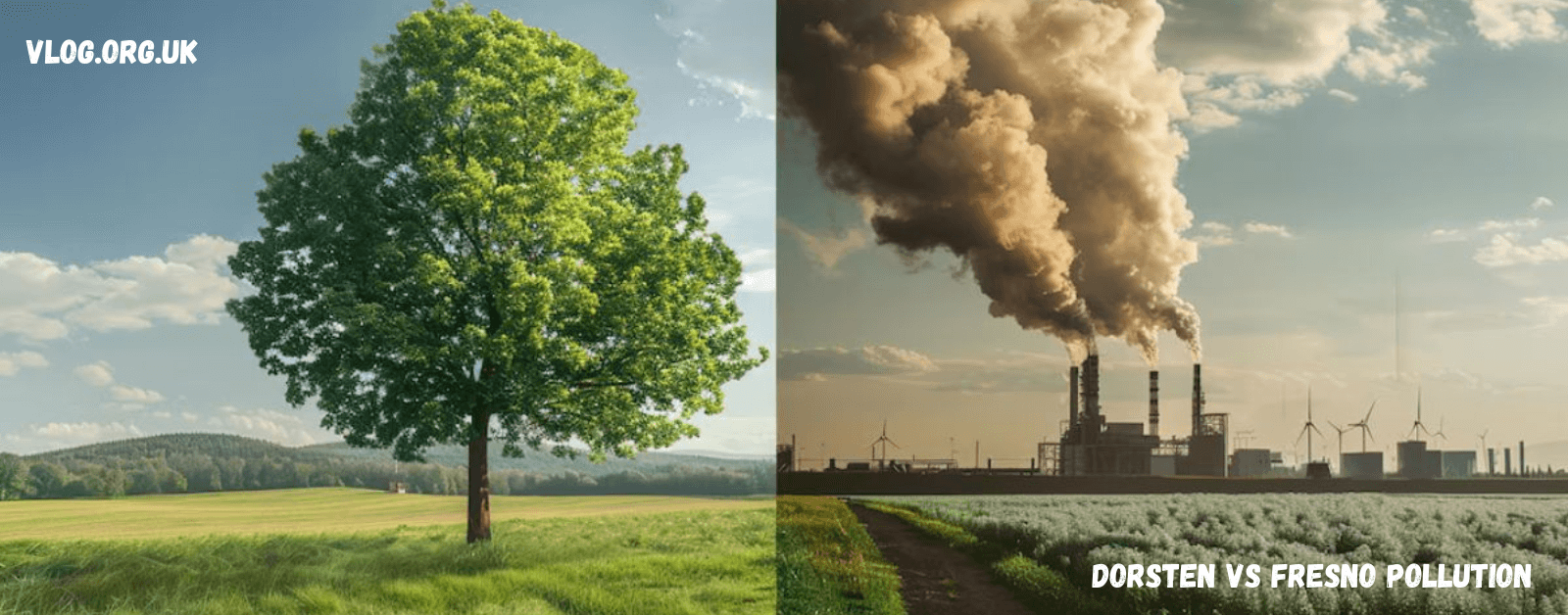
Introduction to Dorsten vs Fresno Pollution
Pollution shapes the health, habits, and hopes of entire cities. From the lush streets of Dorsten in North Rhine-Westphalia, Germany, to the bustling energy of Fresno in California’s San Joaquin Valley, environmental conditions influence every breath, every drop of water, and every plot of land.
This article dives deep into the contrast between two very different urban environments. With expert insights, verified scientific data, and community-based initiatives, we explore Dorsten vs Fresno pollution in a fresh, exciting light—clearly, simply, and with positive momentum.
Overview of Dorsten and Fresno
Dorsten is a charming city nestled in Germany’s Ruhr region, known for its green landscapes and robust European environmental standards. Once an industrial hub, Dorsten is now evolving with sustainability in mind, embracing green spaces, efficient wastewater management, and modern recycling programs.
In contrast, Fresno, located in the heart of California’s Central Valley, thrives on agriculture. But this productivity comes with challenges—agricultural runoff, urban sprawl, and air pollution linked to transportation emissions and temperature inversions. Yet, the city also shows powerful signs of change through renewable energy initiatives and grassroots action.
Air Pollution Comparison (Dorsten vs Fresno)
Dorsten maintains relatively low smog and ozone levels. Thanks to Germany’s environmental regulations and advanced air quality monitoring systems, the city enjoys cleaner air. Green transportation and policies limiting industrial emissions are helping the region transition to a more sustainable future.
Fresno, on the other hand, often ranks among the most polluted cities in the U.S. The San Joaquin Valley geography traps particulate matter and ozone, especially during hot summers. Coupled with vehicle emissions and Central Valley agriculture, this contributes to an ongoing public health concern—yet the city is fighting back with air quality awareness programs and support from environmental organizations.
Water Pollution Comparison (Dorsten vs Fresno)
Dorsten’s water systems are protected by strong wastewater management frameworks. German cities invest heavily in keeping waterways clean, with strict rules on industrial discharge and stormwater management. Water contamination is monitored and generally remains within safe limits.
Fresno, in contrast, grapples with pesticide runoff, nitrate contamination, and legacy pollutants in groundwater. Much of this stems from Central Valley agriculture. However, federal and state funds are flowing into pollution control projects and innovative water filtration systems to address this longstanding issue.
Land Pollution Comparison
In Dorsten, land use policies and urban planning have helped minimize the impact of past industrial activities. Though there are still pockets of concern—particularly in older industrial zones—the shift toward sustainable farming and soil restoration is visible and promising.
Fresno faces more immediate challenges, from soil contamination due to pesticides to rapid urban sprawl. But tree-planting initiatives, zoning reforms, and collaborations with Cambridge University and local nonprofits are helping regenerate the urban landscape and improve biodiversity.
Factors Contributing to Pollution in Each City
Dorsten’s pollution history is tied to its industrial past, but modern German environmental laws have transformed it into a greener city. Policies target transportation emissions, regulate factories, and promote environmental sustainability.
Fresno’s pollution, by contrast, is closely tied to geography and farming. Surrounded by mountains, the valley traps pollutants. The vast agricultural sector contributes to pesticide runoff, and vehicle emissions remain high. Still, technological upgrades and rising community awareness programs are bringing progress.
Government and Community Efforts to Reduce Pollution
The German government, with support from local municipalities in Dorsten, implements strong environmental frameworks. Recycling is a way of life, and green energy incentives have led to visible reductions in emissions. Environmental organizations collaborate actively with citizens, ensuring a cleaner future.
Fresno’s battle against pollution involves federal mandates and state initiatives. Programs promoting solar energy, electric vehicles, and clean water access are gaining momentum. Local NGOs, neighborhood groups, and health advocates work tirelessly on pollution control and public education, with the city recently launching a major green transportation plan.
Impact of Pollution on Health and the Environment
In Dorsten, improved air and water quality has reduced respiratory diseases and environmental degradation. Studies suggest better ecological impact metrics due to green planning, with visible gains in biodiversity and public well-being.
Fresno, meanwhile, has one of the highest asthma rates in the U.S. linked directly to air pollution. Children and elderly residents are most vulnerable. Yet, strong community-driven healthcare and environmental campaigns are mitigating these risks, aiming to reverse decades of damage.
Conclusion:
Both Dorsten and Fresno are taking bold steps toward a greener future. But based on current data and environmental health indicators, Fresno faces more significant pollution challenges, particularly in air and water quality.
Dorsten’s cleaner environment, backed by German environmental laws, widespread recycling programs, and sustainable planning, sets a model for transformation. Yet Fresno’s story is one of resilience—facing deep-rooted challenges with innovation, community strength, and global collaboration.
The journey isn’t over for either city, but the direction is clear: toward sustainability, community empowerment, and a healthier world.
FAQs
1. Why is air pollution worse in Fresno than in Dorsten?
Fresno’s location in a valley, combined with extensive agriculture and vehicle traffic, traps pollutants. Dorsten benefits from stricter regulations and better air circulation.
2. How does Dorsten manage water pollution?
Dorsten uses advanced wastewater treatment systems, stormwater control, and EU-compliant discharge regulations to maintain water quality.
3. Is land pollution a concern in Dorsten?
Only in some former industrial areas. These are being remediated with soil cleanup and green redevelopment.
4. What health problems are linked to pollution in Fresno?
Respiratory diseases, particularly asthma, are common due to poor air quality and exposure to agricultural chemicals.
5. What are both cities doing to reduce pollution?
Dorsten promotes recycling, green transport, and renewable energy. Fresno is investing in clean water, solar power, and local education programs.
6. Are there organizations helping with pollution control?
Yes. Both cities work with environmental organizations, universities like Cambridge, and local communities to implement sustainable solutions.
Read Next :-Blog Arcy Art




